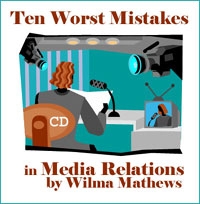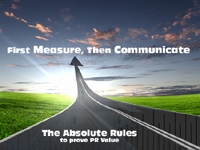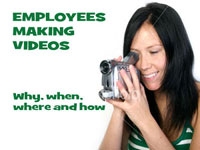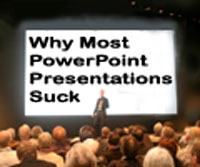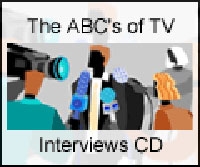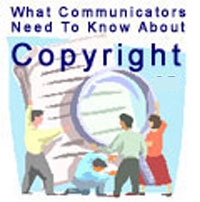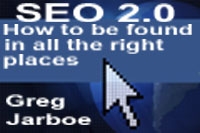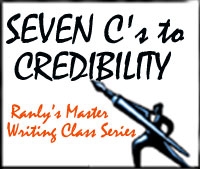Are you tired of struggling to get—and keep—people’s attention and convince them to take action?
You can improve your ability to connect with and influence others by learning how our brain works and applying some simple techniques based in neuroscience.
Forget about right brain/left brain, an archaic concept. Instead, the “social brain” drives our thinking and our actions.
This session will briefly cover basic neuroscience principles geared toward non-scientists. We’ll then focus on how you can apply those principles to help yourself and others think better and perform at higher levels. By taking these actions, you can improve your influencing skills and actions.
Learn how to:
- Increase your self-awareness to improve your ability to influence
- Design the best environment for influencing
- Speak and write with intent to make better connections with others
- Make your messages more compelling and memorable
- Listen more effectively
- Slow down and quiet the brain to tap into the unconscious and speed up gaining insights and influencing
- Ask powerful thinking questions that increase focus and gain greater clarity
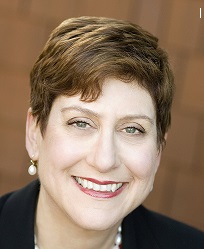 Your webinar leader, Liz Guthridge is an award-winning consultant, leadership coach and trainer who’s studied with Dr. David Rock of The NeuroLeadership Institute, Dr. BJ Fogg, founder of the Stanford Persuasive Technology Lab and other luminaries in the fields of employee communication and organizational change. Liz has extensive experience supporting leaders improve their communication, develop new habits and adapt their organizations.
Your webinar leader, Liz Guthridge is an award-winning consultant, leadership coach and trainer who’s studied with Dr. David Rock of The NeuroLeadership Institute, Dr. BJ Fogg, founder of the Stanford Persuasive Technology Lab and other luminaries in the fields of employee communication and organizational change. Liz has extensive experience supporting leaders improve their communication, develop new habits and adapt their organizations.
Liz Guthridge is an award-winning leadership coach, consultant and trainer with extensive change, employee communication and organization development experience.
As the founder of the boutique firm Connect Consulting, Liz works with leaders at all levels to help them move from blue-sky thinking to greener pastures actions. With her support, Liz’s clients enhance the clarity of their ideas, plans and actions. Her clients also improve the quality of their conversations, their ability to influence and their skill in building habits.
Liz contributed the chapter “Change Through Smart-Mob Organizing: Using Peer-by-Peer Practices to Transform Organizations” to the book The Change Champion’s Field Guide (Wiley 2013).
Besides being a certified coach in brain-based coaching, she is serving as a teaching assistant for the Executive Masters in NeuroLeadership program through the NeuroLeadership Institute co-founded by Dr. David Rock. Liz also is a graduate of Dr. BJ Fogg’s Persuasion Boot Camp and is one of his Tiny Habits™ coaches.
- Do your communication efforts tend to be “one-offs” that consume a lot of time and effort but don’t always generate the results you had hoped for?
- Do senior leaders’ eyes glaze over when you explain your latest “big idea”?
- Do you wish you had more time to spend learning about new things and less putting out fires?
While strategic planning is probably at the top of the list of things that most communicatorsdon’t want to do, the reality is that when done well, strategic planning can not only help to save time, and money, but can increase the odds of achieving desired communication outcomes. And, the good news is, effective planning doesn’t have to take weeks or months or result in dozens of meetings. In fact, the process can actually be quite simple and straightforward.
This webinar will offer easy-to-follow steps and provide practical tips and advice that can be used for any planning effort—from developing an internal communications plan to developing a marketing campaign—or even focusing on a single initiative.
What You Will Learn:
- How to position the plan for success by starting with the end in mind
- Why your mission statement is your friend
- How and why to align your efforts with your organization’s strategic plan
- A step-by-step process for developing a strategic plan
- Developing a process for plan updates – how to keep the plan alive
- How to build measurement into the plan
- How to make sure things get done!
Who Should Attend
- Communicators, PR and marketing professionals at all levels.
Presented by:
 Linda Pophal is CEO of Strategic Communications, and a marketing and communication strategist with 20+ years experience in healthcare, education and not-for-profit marketing and communications. She has managed all aspects of corporate and marketing communication including employee communication, public relations, advertising, social media, market research, brand management and strategic planning. Pophal has developed and implemented strategic business, marketing and communication plans for healthcare and educational organizations and consultants, generating measurable results based on client goals. She has developed and delivered training programs for national and local audiences on all aspects of communication management and employee relations. She is author of The Essentials of Corporate Communications and PR and Complete Idiot’s Guide to Strategic Planning.
Linda Pophal is CEO of Strategic Communications, and a marketing and communication strategist with 20+ years experience in healthcare, education and not-for-profit marketing and communications. She has managed all aspects of corporate and marketing communication including employee communication, public relations, advertising, social media, market research, brand management and strategic planning. Pophal has developed and implemented strategic business, marketing and communication plans for healthcare and educational organizations and consultants, generating measurable results based on client goals. She has developed and delivered training programs for national and local audiences on all aspects of communication management and employee relations. She is author of The Essentials of Corporate Communications and PR and Complete Idiot’s Guide to Strategic Planning.
At Cisco, they’ve changed the way they use words. It’s saving them money and helping them work together better. It’s connecting the internal culture to the business in deeper, more meaningful ways. And that’s helping them serve customers better and sell more.
In this session, Mark Buchanan, program lead for Cisco’s brand language initiative, paints a picture of how Cisco is changing the way 75,000 employees are using words across a $130 Billion business. He’ll walk you through how the brand language team set the plan in motion and made lasting changes. He’ll include practical tips and share insights, successes, and challenges. And he’ll give you his thoughts about how the lessons from Cisco can make a difference for your business.
The session includes:
- Evaluating the opportunity
- Aligning your voice with your business
- Connecting with your audience
- Scaling the program
- Making it stick
Presented by:
 Mark Buchanan is the program lead for brand language at Cisco. He’s helping the company use language that is simpler and more distinctive. And he’s helping bring empathy back to a technology company that has always cared about people, but has found those values challenged by rapid growth and increasingly complex technology. He’s worked with Sales, Marketing, Engineering, Services and Corporate Communications and has seen impressive results across every function. Together, Mark and the people at Cisco are changing the culture of language and communications, around the world for 75,000 employees, 50,000 contractors and vendors, across a $130 billion business.
Mark Buchanan is the program lead for brand language at Cisco. He’s helping the company use language that is simpler and more distinctive. And he’s helping bring empathy back to a technology company that has always cared about people, but has found those values challenged by rapid growth and increasingly complex technology. He’s worked with Sales, Marketing, Engineering, Services and Corporate Communications and has seen impressive results across every function. Together, Mark and the people at Cisco are changing the culture of language and communications, around the world for 75,000 employees, 50,000 contractors and vendors, across a $130 billion business.
 When the exec or the client is stuck on newsletters, cool new technologies, or sending e-mails and memos, get them refocused on strategy. Quit being an order taker, and start doling out more value to your execs and clients by using questions and a little psychology to drive strategic thinking. Now more than ever communicators must be courageous and add value. Tight Q&A, skilled facilitation approaches and more enable the communicator.
When the exec or the client is stuck on newsletters, cool new technologies, or sending e-mails and memos, get them refocused on strategy. Quit being an order taker, and start doling out more value to your execs and clients by using questions and a little psychology to drive strategic thinking. Now more than ever communicators must be courageous and add value. Tight Q&A, skilled facilitation approaches and more enable the communicator.
What You Will Learn:
- Use questions effectively to drive strategic thinking
- Enable client or exec “discovery” of the right approach
- Use planning and flexible facilitation to create planning meeting that achieve goals and bring ‘em back for more impact
Questions that will be answered
- How do I tell my exec their idea is a bad one?
- How do I get my client refocused on the right stuff?
- What do I do when my exec high-jacks my planning meeting?
- What do I do when we stray off agenda at a strategic planning session?
Presented by:
 Stacy Wilson, ABC, is president of Eloquor Consulting, Inc., in Lakewood, Colorado. Stacy has more than 22 years of experience and has been completely focused on internal communication and organizational development since the mid 90’s. Her firm helps organizations communicate more effectively with employees, using internal communication as a lever to positively impact the bottom line.
Stacy Wilson, ABC, is president of Eloquor Consulting, Inc., in Lakewood, Colorado. Stacy has more than 22 years of experience and has been completely focused on internal communication and organizational development since the mid 90’s. Her firm helps organizations communicate more effectively with employees, using internal communication as a lever to positively impact the bottom line.
Eloquor serves a broad array of industries with a full complement of internal communication services. Stacy and her team primarily focus on: Intranet, portal and social technology governance and usability; Change communication; Strategic internal and HR communication; Internal brand integration; Leader communication training and other OD assignments.
The firm’s sweet spots are technology-related assignments, such as portal governance and usability, and change communication, such as major systems changes. Clients include ConocoPhillips, MTS Systems, Tyco Electronics, IHS, the IRS, a Fortune 35 healthcare company, a Fortune 150 defense contractor and a Fortune 50 financial services company. Stacy is a past IABC international board member and recently chaired the 2008 IABC Southern Region Conference. She is also a member of the Council of Communication Management and the Society of HR Management.
No one has to tell you what a great speech is, right? You know one when you hear it.
Well you’re about to hear a bunch of them—and you’re going to learn from them, guaranteed.
Vital Speeches of the Day editor David Murray presents “Speechwriting Jam Session 2010,” 75 entertaining, inspirational and instructive minutes that will have the hair standing up on the same arm you’re scribbling notes with. We’ll discuss, even debate, what makes these great speeches great.
Through dramatic readings from winners of the 2010 Cicero Speechwriting Awards and highlight reels from the Vital Speeches YouTube site, Murray will help us reawaken the giants within us by sharing together excerpts from speeches contemporary and classic, famous and rare. (In the true spirit of an improvisational jam session, you’ll even have a chance to nominate some of your own YouTube favorites, so come prepared!)
You’ll come away from this session with:
• Concrete examples showing how leaders are addressing the issues of this particular moment in business, politics and society.
• A stockpile of examples—video and text—to show reticent speakers: rhetorical tactics that have passed the test and been pulled off by the best.
• Renewed enthusiasm and an expanded sense of what’s possible in leadership communication.
• And a goose bumps, guaranteed.
SESSION LEADER:
- David Murray writes and speaks about communication—business, political and personal. He’s editor of Vital Speeches of the Day, a monthly collection of the best speeches in the world. He writes about sports, people, politics and travel for magazines, newspapers and websites. publications and websites. And he discusses the communication life at his popular personal blog, Writing Boots.http://www.vsotd.comhttp://writingboots.typepad.com/writing_boots/profiles/http://writingboots.typepad.com/
Email is now so embedded into our daily lives that we think nothing of it. We need to, however, because the Internet’s original “killer app” is starting to kill employee productivity and focus. Consider these findings:
- The average business executive spends two hours a day on e-mail
- 70% of employees react to emails within 6 seconds of them arriving
- The number of e-mail messages sent is rising dramatically — by some estimates, by more than 20% a year
- Almost one in five emails was copied unnecessarily to staff members other than the main recipient
- The use – and, particularly, the misuse – of email costs businesses up to $16,000 per employee per year
This webinar is aimed at arming attendees with the insight and ideas to help them get a lot smarter about using email, for themselves and their organizations. Don’t miss this rare chance to learn the latest thinking and best practices from two of the foremost global experts on this topic.
What you will learn:
- The state of workplace email today, and why communication professionals need to get activated in the battle
- Why this problem is so hard to solve, and what you must do to overcome the hurdles
- How to develop a centralized strategy to minimize internal communication emails
- How to launch an effective email etiquette program that will make everyone in your organization happier about their inbox.
- Tools, tips and tricks to outsmart your inbox
“I learned that the biggest levers we can pull to change our email situation are behavior based, not technology based.”
“I didn’t realize how much research exists on this topic.”
Who should attend
Anyone who would like to learn how to better conquer their daily email war, and help their organization feel less pain and angst from their inbox. This webinar is especially suitable for professionals in the areas of internal communications, marketing and public relations.
Presented by:
 David Grossman, ABC, APR, Fellow PRSA, is both a teacher and student of effective communication. He is one of America’s foremost authorities on communication and leadership inside organizations. A much sought-after consultant and speaker, David is often quoted in media, providing expert commentary and analysis on employee and leadership issues. Most recently, he was featured on “NBC Nightly News” about e-mail overload, and in the Chicago Tribune. David is Founder and CEO of The Grossman Group, an award-winning Chicago-based communications consultancy focused on organizational consulting, strategic leadership development and internal communications. His most recent books are You Can’t NOT Communicate: Proven Solutions That Power the Fortune 100, (now in its second edition), and its follow up You Can’t NOT Communicate 2: More Proven Solutions That Power the Fortune 100.
David Grossman, ABC, APR, Fellow PRSA, is both a teacher and student of effective communication. He is one of America’s foremost authorities on communication and leadership inside organizations. A much sought-after consultant and speaker, David is often quoted in media, providing expert commentary and analysis on employee and leadership issues. Most recently, he was featured on “NBC Nightly News” about e-mail overload, and in the Chicago Tribune. David is Founder and CEO of The Grossman Group, an award-winning Chicago-based communications consultancy focused on organizational consulting, strategic leadership development and internal communications. His most recent books are You Can’t NOT Communicate: Proven Solutions That Power the Fortune 100, (now in its second edition), and its follow up You Can’t NOT Communicate 2: More Proven Solutions That Power the Fortune 100.
 Nathan Zeldes is an independent organizational consultant, a role he has adopted in 2009 after a 26 year career at Intel corporation. A physicist morphed into an organizational change agent, Nathan is recognized as a global thought leader in the search for improved knowledge worker productivity. Having enjoyed a long career as a manager and principal IT engineer at Intel, he now helps organizations to solve core problems at the intersection of technology and human behavior. His experience includes initiating and leading optimal corporate technology adoptions in the domains of Information Technology, Internet applications, Innovation Management, Remote and Distributed work, and Knowledge Management. A key component in Nathan’s work is mitigating the problem of email and information overload which is harming the productivity and quality of life of Knowledge Workers everywhere. He had identified the problem 17 years ago, and since then he’s developed and deployed original solutions at Intel and other companies, and has founded the Information Overload Research Group to further its study. He is also active at present in the areas of Social Media adoption, Technical Leadership development, and the multi-generational workplace of the future. Nathan’s blog is Challenge Information Overload.
Nathan Zeldes is an independent organizational consultant, a role he has adopted in 2009 after a 26 year career at Intel corporation. A physicist morphed into an organizational change agent, Nathan is recognized as a global thought leader in the search for improved knowledge worker productivity. Having enjoyed a long career as a manager and principal IT engineer at Intel, he now helps organizations to solve core problems at the intersection of technology and human behavior. His experience includes initiating and leading optimal corporate technology adoptions in the domains of Information Technology, Internet applications, Innovation Management, Remote and Distributed work, and Knowledge Management. A key component in Nathan’s work is mitigating the problem of email and information overload which is harming the productivity and quality of life of Knowledge Workers everywhere. He had identified the problem 17 years ago, and since then he’s developed and deployed original solutions at Intel and other companies, and has founded the Information Overload Research Group to further its study. He is also active at present in the areas of Social Media adoption, Technical Leadership development, and the multi-generational workplace of the future. Nathan’s blog is Challenge Information Overload.
Think of any great presenter—Steve Jobs, Richard Branson or Jeff Bezos—and it won’t take you long to figure out that they are also master storytellers. Storytelling is increasingly becoming a “must-have” skill for business leaders, but you still won’t find it on any MBA curriculum.
This webinar will give you a deeper understanding why story is such a powerful strategic tool and how it can be used in the business setting. We will show you a specific “before and after” example of how a case study was transformed into powerful case story for pitching new business. We’ll also give you some key tips on how to craft and use stories to make an impact in your next big presentation or business meeting.
“As an ex-newspaper reporter, I have always recognized the value of storytelling. This webinar helped provide a great framework for bringing people into the important strategic and cultural stories I need to be communicating.”
What You Will Learn:
- The neuroscience and psychology that proves why stories work
- Tips for transforming run-of-the-mill presentation content into powerful stories that engage audiences
- How storytelling can be used as strategic tool to build chemistry and trust with others
- How even data-driven presentations can benefit from the art of storytelling
- The difference between conventional storytelling and strategic storytelling for business purposes. Please bring your ideas and questions!
Who Should Attend
This webinar is primarily aimed at those in the early stages of implementing or learning about strategic business storytelling, although it will also help more advanced practioners to focus their efforts. It is especially suitable for:
- Small and mid-sized business leaders
- Corporate executives who are new to storytelling
Presented by:
 Jane Praeger is a former documentary filmmaker and faculty member in Columbia University’s M.S. program in Strategic Communications and Communications Practice where she teaches presentation design and delivery, communications strategy, strategic storytelling and writing. She founded Ovid Inc. in 1992 to help people find their public voices. Since then, she has provided speech, presentation, media training and customized workshops, to corporations such as Nickelodeon, Coach, Estee Lauder, McKinsey & Company, Euro RSCG Worldwide, as well as other technology, entertainment, and consulting firms. On the non-profit side, she has worked with Open Society Foundations, Doctors Without Borders, Atlantic Philanthropies, The Ms. Foundation, Harvard University, Columbia University Business School, and many others.
Jane Praeger is a former documentary filmmaker and faculty member in Columbia University’s M.S. program in Strategic Communications and Communications Practice where she teaches presentation design and delivery, communications strategy, strategic storytelling and writing. She founded Ovid Inc. in 1992 to help people find their public voices. Since then, she has provided speech, presentation, media training and customized workshops, to corporations such as Nickelodeon, Coach, Estee Lauder, McKinsey & Company, Euro RSCG Worldwide, as well as other technology, entertainment, and consulting firms. On the non-profit side, she has worked with Open Society Foundations, Doctors Without Borders, Atlantic Philanthropies, The Ms. Foundation, Harvard University, Columbia University Business School, and many others.
 Heather Thomas is a business builder who has clocked countless hours performing “on stage” in the presentation spotlight. She earned her stripes in the agency world, working at Agency.com, Modem Media and the digital agency Critical Mass where she built their Business Development and Corporate Marketing practice from the ground up, ultimately tripling their revenue. After crafting hundreds of high-stakes presentations to win clients such as Procter & Gamble, NASA and Dell, Heather joined Ovid in 2010 to pass what she learned about persuasive presentations to others. In addition to her work with Ovid, Heather runs Winsome, a business development consulting boutique. She is also an adjunct instructor at Columbia University where she teaches Masters students the art of strategic storytelling. Heather is a cum laude graduate of Princeton University.
Heather Thomas is a business builder who has clocked countless hours performing “on stage” in the presentation spotlight. She earned her stripes in the agency world, working at Agency.com, Modem Media and the digital agency Critical Mass where she built their Business Development and Corporate Marketing practice from the ground up, ultimately tripling their revenue. After crafting hundreds of high-stakes presentations to win clients such as Procter & Gamble, NASA and Dell, Heather joined Ovid in 2010 to pass what she learned about persuasive presentations to others. In addition to her work with Ovid, Heather runs Winsome, a business development consulting boutique. She is also an adjunct instructor at Columbia University where she teaches Masters students the art of strategic storytelling. Heather is a cum laude graduate of Princeton University.
 Get instant access to this webinar replay. Or Subscribe to ASK and access all replays (best value).
Get instant access to this webinar replay. Or Subscribe to ASK and access all replays (best value).
Whether explicit or not, all corporate communication has an underlying goal of persuading an audience to do something, i.e., like you, trust you, embrace a scary change, buy your product or service, etc.
Even if you buy this logic, you probably aren’t yet persuaded that you need to purchase this webinar on moving an audience to action. Why? Because facts and data alone do not convince audiences; they have to desire to act. That’s where rhetoric, the study of understanding, discovering and developing arguments for particular situations, comes in. It behooves all of us in business, especially those in corporate communications, to know and use the essential time-tested secrets for changing an audience’s mood, mind and willingness to act.
Don’t miss this chance to learn from rhetoric expert and author of Thank You For Arguing, Jay Heinrichs, who has been described as a cross between Cicero and David Letterman. During this pithy and entertaining webinar, Jay will teach us the most practical tips and tools to master the art of persuasion, whether when speaking or writing, using sources as diverse as Aristotle, Lincoln and Homer Simpson. Whether you work in marketing, sales, public relations, internal communications or executive leadership, this webinar is for you. Are you persuaded yet?
“The Pivot concept was the best idea. Thanks for putting these together – you offer a valuable product at affordable prices.”
What You Will Learn:
- First, the 3-step strategy for getting the audience the mood and moving it toward action
- Ethos, pathos or logos … which persuades best, when?
- What’s the best medium for your message?
- A simple strategy to get an argument unstuck
- Aristotle’s three traits of credible leadership
- A “tool kit” of rhetorical tactics, from the Pivot to the Reluctant Conclusion
Who Should Attend
This webinar is designed for everyone who would like to win audiences and move them to action by understanding the power of rhetoric. It is especially suitable for:
- Corporate communicators, marketers, adverting execs, HR, sales, writers and editors, teachers, students and politicians.
Presented by:

Stop repeating these 10 proven mistakes when dealing with the media and managing your media relations program!
Ever since outlaw Jesse James wrote and issued the first news release, media relations practitioners have steadfastly refused to learn from the mistakes of their forebears.In James’s case, he didn’t take into account the suspicious and questioning nature of the reading populace, who viewed his bombastic news releases as early American “spin control.”
Learning Topics
Underestimating the intelligence of your audience is just one of the 10 major mistakes covered in this session. Others include:
- Not being a student of the media, keeping up with their changes needs and trends
- Confusing media output numbers with bottom-line outcome measures
- Annoying editors with misdirected and/or badly-prepared materials
- Not routinely evaluating your media relations programs and management
- Trying to substitute media relations for communication
Wilma answers real-world questions on:
- Holding the media accountable and keeping them from allowing bias or half-truths from creeping into news coverage, so that what is reported is straight, honest and fair
- How recent college graduates — with no contacts — can build relationships with the media
- The most effective ways to pitch
- Dealing with a less-than-objective journalist
- The best way to get to know a editor, writer or reporter
- The most important and effective tools in media relations
- The best day/time to pitch stories
- The least offensive way to bring a reporter’s error to his or her attention – and how to ask for a correction
- Pushing the envelope: How persistent you should be in making your pitch
- Teaching senior management the difference between a subjective, self-serving news item and a legitimate, content-rich press release
- Measures practitioners should routinely implement to measure results on the fly – especially during a crisis
- The biggest changes in media relations over the past 10 years
Presented by:
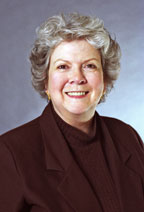 Wilma Mathews, ABC and IABC Fellow, works for Arizona State University as director of constituent relations. She also conducts media relations seminars, provides media training for corporate executives and is co-author of On Deadline: Managing Media Relations (4th edition, Spring 2006). Her background includes corporate communications and international public relations for AT&T/Lucent; nonprofit communication for two chambers of commerce and a medical center; and writing/editing for a newspaper and magazine. A national and international speaker, Wilma also contributes articles to trade publications and lectures on PR and media relations at ASU.
Wilma Mathews, ABC and IABC Fellow, works for Arizona State University as director of constituent relations. She also conducts media relations seminars, provides media training for corporate executives and is co-author of On Deadline: Managing Media Relations (4th edition, Spring 2006). Her background includes corporate communications and international public relations for AT&T/Lucent; nonprofit communication for two chambers of commerce and a medical center; and writing/editing for a newspaper and magazine. A national and international speaker, Wilma also contributes articles to trade publications and lectures on PR and media relations at ASU.
PR & Marketing Is Changing – Are You? Online PR provides the means to reach target audiences directly, with or without participation of the news media. Internet marketers have been doing that for years, but public relations professionals have been slow to get on board. No PR professional can afford to ignore online PR or outsource it to specialists; it is an essential part of the skill set all PR professionals must have. It’s as fundamental as writing, pitching and building relationships.
So, what must you know to thrive in this ever-changing online environment? If you’re like most public relations pros, you need a broader knowledgebase, greater online skills – and perhaps, a new mindset. PR pros are doing a better job with social media than keyword research and SEO, which much change. To define online PR simply as social media is short-sighted and will lead PR pros astray. This jam-packed webinar will give you a critical understanding of the basic online PR skills you need to master fast, for the sake of your clients, employers and your career.
Learning Topics:
- When SEO meets PR: how to write effectively for sites, releases, articles and newsletters
- When PR meets social media: which sites, what to monitor, and how do you know it’s working?
- How keyword research for Online PR differs from online advertising
- Online PR best practices for your website
- Optimizing online press releases—what’s most effective now
What You Will Learn:
- 4 results-driven SEO techniques for online PR
- A 10-minute keyword research method that always yields insights
- The right and wrong role websites play with Online PR
- 3 proven ways to write copy for both humans and search engines
- Traditional vs. online releases: the real data may surprise you
- An overlooked yet powerful method to gain consistent web site traffic
- The Online PR Social Media blueprint: it’s not what you think
- Buzz and reputation monitoring: recommended tools and tactics.
Presented by:
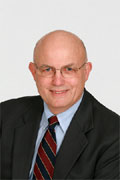 Jim Bowman has broad experience in all functional areas of public relations and corporate communications, with an emphasis on media relations. As Vice President of Corporate Communications for Nokia Inc., he was part of the global team that established Nokia as one of the world’s top 10 brands. Jim’s strategies and creative thinking have helped build the brands and images of some of the world’s most respected companies and get small companies known. As owner and President of J. R. Bowman and Associates, LLC, Jim now concentrates on serving small-to-medium-size businesses. Jim’s ability to diagnose PR problems and suggest solutions earned him the name, “The PR Doc®” among his associates. He has launched http://www.theprdoc.com to help small agencies and individual public relations practitioners get affordable access to PR tools and expert help from senior practitioners. Jim was recognized by his peers with election to the Arthur W. Page Society, a selected-membership organization of senior public relations executives, and appointment to the client advisory board of the Council of Public Relations Firms.
Jim Bowman has broad experience in all functional areas of public relations and corporate communications, with an emphasis on media relations. As Vice President of Corporate Communications for Nokia Inc., he was part of the global team that established Nokia as one of the world’s top 10 brands. Jim’s strategies and creative thinking have helped build the brands and images of some of the world’s most respected companies and get small companies known. As owner and President of J. R. Bowman and Associates, LLC, Jim now concentrates on serving small-to-medium-size businesses. Jim’s ability to diagnose PR problems and suggest solutions earned him the name, “The PR Doc®” among his associates. He has launched http://www.theprdoc.com to help small agencies and individual public relations practitioners get affordable access to PR tools and expert help from senior practitioners. Jim was recognized by his peers with election to the Arthur W. Page Society, a selected-membership organization of senior public relations executives, and appointment to the client advisory board of the Council of Public Relations Firms.
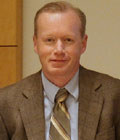 Mike Moran, is author of the acclaimed book on Internet marketing, Do It Wrong Quickly, on the heels of the best-selling Search Engine Marketing, Inc., Mike Moran led many initiatives on IBM’s Web site for eight years, including IBM’s original search marketing strategy. Mike holds an Advanced Certificate in Market Management Practice from the Royal UK Charter Institute of Marketing, and is a Visiting Lecturer at the University of Virginia’s Darden School of Business. He also writes marketing columns for Internet Evolution and Search Engine Guide. Mike frequently keynotes conferences on Internet marketing for marketers, public relations specialists, market researchers, and technologists, and serves as Chief Strategist for Converseon, a leading digital media marketing agency. Prior to joining Converseon, Mike worked for IBM for 30 years, rising to the level of Distinguished Engineer. Mike can be reached through his Web site (mikemoran.com), which is also home to his Biznology newsletter and blog.
Mike Moran, is author of the acclaimed book on Internet marketing, Do It Wrong Quickly, on the heels of the best-selling Search Engine Marketing, Inc., Mike Moran led many initiatives on IBM’s Web site for eight years, including IBM’s original search marketing strategy. Mike holds an Advanced Certificate in Market Management Practice from the Royal UK Charter Institute of Marketing, and is a Visiting Lecturer at the University of Virginia’s Darden School of Business. He also writes marketing columns for Internet Evolution and Search Engine Guide. Mike frequently keynotes conferences on Internet marketing for marketers, public relations specialists, market researchers, and technologists, and serves as Chief Strategist for Converseon, a leading digital media marketing agency. Prior to joining Converseon, Mike worked for IBM for 30 years, rising to the level of Distinguished Engineer. Mike can be reached through his Web site (mikemoran.com), which is also home to his Biznology newsletter and blog.
 Marc Harty is CEO of MainTopic Media, Inc., a strategically focused, values-driven, marketing consultancy and training company. Ever the entrepreneur, Marc has owned an ad agency, a web development firm, and a search marketing firm. A marketing strategist with over two decades of distinguished service, Marc has won over 200 local, national and International awards, including two Clio’s and “Best Of Show” from The Dallas Ad League. Marc speaks regularly on Online PR, Thought Leadership, Social Marketing and Internet Business Transformation. His true passion? Developing proven marketing programs that can help anyone get the visibility and results to successfully manifest their life purpose.
Marc Harty is CEO of MainTopic Media, Inc., a strategically focused, values-driven, marketing consultancy and training company. Ever the entrepreneur, Marc has owned an ad agency, a web development firm, and a search marketing firm. A marketing strategist with over two decades of distinguished service, Marc has won over 200 local, national and International awards, including two Clio’s and “Best Of Show” from The Dallas Ad League. Marc speaks regularly on Online PR, Thought Leadership, Social Marketing and Internet Business Transformation. His true passion? Developing proven marketing programs that can help anyone get the visibility and results to successfully manifest their life purpose.
Can you prove the value of your communication, marketing and PR programs? It’s a simple question, and your bosses rightfully expect concrete answers. How you respond affects the objectives you set, the programs you embark on and ultimately your career success.
Join “Unleashing the Power of PR” author and PRIME Research CEO, Mark Weiner, and SVP of BurrellesLuce, Johna Burke, as they walk you through the current communication measurement landscape in a way that makes new sense. Moderated by award winning journalist, communicator and president of Communitelligence, John Gerstner, Mark and Johna will answer — and sometimes debate — the most important and challenging questions every communication professional needs to know to prove the value of their internal and external communication programs.
This won’t just be a 5,000-foot fly-by of the topic. You’ll gain practical takeaways and actionable advice. Don’t miss this special webinar designed to amp up your skills in measuring PR programs and proving your worth. Did we mention this stuff is critical to your career?
Audio Excerpt
Some of the questions that will be answered:
- What kind of metrics should PR people be measuring?
- Why are clear, concise terminology and metrics so important when executing a public relations research and evaluation system?
- How can research be used to set better objectives
- What are the Barcelona Principles and what do they mean to me?
- How does research and measurement help to guide business decision-making?
- How can research and be used to avoid catastrophe?
- How do you foster a culture for communications research within the team? Among executive leadership?
- How do conduct research and measurement with little or no budget?
- What’s the difference between qualitative and quantitative research? How do you know which to use and when?
- What’s critical to know about measuring social media programs?
Presented by:
 Mark Weiner is the CEO of PRIME Research in North America. PRIME Research is one of the world’s largest public relations and corporate communications research and consulting providers with offices in Western Europe, North and South America, Eastern Europe and the Far East. Since 1993, Mark has devoted his career to helping many of the world’s most respected organizations and brands to demonstrate and generate a positive return on their investment in corporate and brand communications. He is the author of “Unleashing the Power of PR: A Contrarian’s Guide to Marketing and Communication” published by John Wiley & Sons. Weiner is a member of the PRSA, IABC and the Institute for Public Relations for whom he served as Trustee and Chairman of the Research and Measurement Commission. He is an editorial advisory board member of PRSA’s Strategist and PR News. A frequent provider of provocative public relations content, Weiner is a recurring conference speaker at international and domestic events, and a prolific author, having published more than one hundred articles.
Mark Weiner is the CEO of PRIME Research in North America. PRIME Research is one of the world’s largest public relations and corporate communications research and consulting providers with offices in Western Europe, North and South America, Eastern Europe and the Far East. Since 1993, Mark has devoted his career to helping many of the world’s most respected organizations and brands to demonstrate and generate a positive return on their investment in corporate and brand communications. He is the author of “Unleashing the Power of PR: A Contrarian’s Guide to Marketing and Communication” published by John Wiley & Sons. Weiner is a member of the PRSA, IABC and the Institute for Public Relations for whom he served as Trustee and Chairman of the Research and Measurement Commission. He is an editorial advisory board member of PRSA’s Strategist and PR News. A frequent provider of provocative public relations content, Weiner is a recurring conference speaker at international and domestic events, and a prolific author, having published more than one hundred articles.
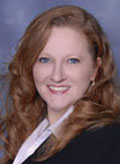 Johna Burke has 23 years experience working both as a public relations practitioner and a provider of services that are vital to the successful performance of communications professionals. For 11 years, starting in 1989, she was associated with U-Haul International, ultimately becoming head of public and investor relations. Ms. Burke joined BurrellesLuce, in its Phoenix office, in 2000. She served as West Coast regional vice president, a corporate vice president in 2008 and October 2009, was appointed senior vice president-marketing. Ms. Burke is a highly rated speaker who is often invited to talk about best practices in media relations and monitoring, including the measurement of PR effectiveness; her written views have appeared in a variety of PR industry outlets and she is a regular contributor to Fresh Ideas, the incisive blog produced by BurrellesLuce. Ms. Burke is immediate past chair of the Southern Region of the International Association of Business Communicators and current chair of its Nominations Committee.
Johna Burke has 23 years experience working both as a public relations practitioner and a provider of services that are vital to the successful performance of communications professionals. For 11 years, starting in 1989, she was associated with U-Haul International, ultimately becoming head of public and investor relations. Ms. Burke joined BurrellesLuce, in its Phoenix office, in 2000. She served as West Coast regional vice president, a corporate vice president in 2008 and October 2009, was appointed senior vice president-marketing. Ms. Burke is a highly rated speaker who is often invited to talk about best practices in media relations and monitoring, including the measurement of PR effectiveness; her written views have appeared in a variety of PR industry outlets and she is a regular contributor to Fresh Ideas, the incisive blog produced by BurrellesLuce. Ms. Burke is immediate past chair of the Southern Region of the International Association of Business Communicators and current chair of its Nominations Committee.
Can you speak the language of management? If not, here’s what you’re missing:
· The ability to add value in financial discussions with your boss and other top managers
· The skills needed to get your latest brainstorms adopted by key financial decision makers
· A plethora of financial tools that can help you make better business decisions
· An understanding of how your company’s financial performance affects its most critical asset: the workforce
In just 90 minutes, you’ll gain a new skill set¾and a potential ticket to the management table
Before you take a seat at the management table, you’d better have a solid understanding of key financial terms and accounting concepts. If not, you won’t be able to converse with those seated around you, because finance is the only language they speak.
Overcome the financial language barrier — for good — by attending this audio seminar. Using an easy-to-follow format, James Cole will demystify financial terminology, translate the accounting jargon and illustrate how communicators use financial information to increase their effectiveness.
Don’t miss this vital training event, designed to give you the skills and knowledge you need for holding your own with those who hold the company’s purse strings.
Key learning objectives:
· What’s at stake: Why every communicator should have a solid understanding of finance
· How a balance sheet, income statement and cash flow statement are used to analyze a company’s performance
· What management accounting tools CEOs use to monitor a company’s fiscal health, including EBITDA and pro-forma earnings
· How to cut through the jargon to translate complex financial data into meaningful and useful concepts
· Which financial terms are “must haves” for boosting your business vocabulary, including expenses, assets, capitalization, cash, accrual transactions and many more!
Audio Seminar Bonus: Understand the basics of financial decision-making
James answers real-life questions on:
- What communicators can do to help their organization’s employees better understand how their business works, with the objective of improving performance
- Tips to better communicate financial concepts to a lay audience
- Learning from the mistakes made by Enron
- The best tools to measure financial performance
Your audio seminar leader
James Cole is director of development for the Masonic Home of Virginia. His 25 years of professional experience include roles as auditor, founder, officer and consultant with numerous organizations throughout the U.S. He regularly speaks on such topics as financial reporting, taxes, accounting, fundraising and board development. He was a featured speaker at IABC’s 2005 International Conference in Washington, D.C., and Financial Communication Conference in New York.
If you are like most communicators, you know that text alone is just not enough—today’s employees not only want to see their leaders on video, but want to be seen themselves. YouTube, Vimeo and FaceTime are teaching your employees how powerful video is, and learning about video in their non-work life makes them want to do more with it at work.
Creating meaningful business communications is not the same as recording cute dog tricks. Your employees need to know what works, and what doesn’t. And more importantly, you and your company need to be ready for: increased demand on your IT networks; the need to put policies and procedures in place and the importance of providing training to help them get it right.
In this series you will hear top practitioners talk about how they’ve put a new generation of digital video tools to work in their organization to inspire, lead and train employees; to cultivate employee engagement by putting the right tools in the hands of employees themselves; and to integrate external and internal communications for the kind of results one can only get with truly aligned communications. We’ve found practioners from leading companies to share specifics on what works across categories including internal communications, marketing, PR, social media and human resources.
What You Will Learn:
- How leading companies use employee created video: when, where, and how
- What the IT and regulatory issues are that you need to be most concerned about
- How leaders train and manage employees who are contributing video
- How video can be better integrated with intranets and social media
- The three most important things to AVOID with employee generated content.
- AND most importantly, what kinds of good results happen when you get it right.
Presented by:
 Ronna Lichtenberg is co-founder and CEO, Videotrope. Prior to her entrepreneurial career, Ronna had a long-tenured career contributing to strategic planning and marketing initiatives at Prudential and Prudential Securities. During her tenure, she was the first woman named to Prudential Securities Operating Council. As a superior communicator and strategic consultant, Ronna’s experience incorporates wide-ranging personal experience as a communicator, including former contributing editor of “O”, the Oprah magazine and regular appearances as a workplace expert on national TV. She has published three books in ten languages (to rave reviews) and has a decade of experience as a keynote speaker with Fortune 500 companies and helping small to large businesses successfully execute business development imperatives and strategic initiatives.
Ronna Lichtenberg is co-founder and CEO, Videotrope. Prior to her entrepreneurial career, Ronna had a long-tenured career contributing to strategic planning and marketing initiatives at Prudential and Prudential Securities. During her tenure, she was the first woman named to Prudential Securities Operating Council. As a superior communicator and strategic consultant, Ronna’s experience incorporates wide-ranging personal experience as a communicator, including former contributing editor of “O”, the Oprah magazine and regular appearances as a workplace expert on national TV. She has published three books in ten languages (to rave reviews) and has a decade of experience as a keynote speaker with Fortune 500 companies and helping small to large businesses successfully execute business development imperatives and strategic initiatives.
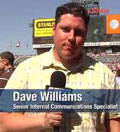 Dave Williams has been working at ESPN since 2000. Prior to joining the corporate communication team he worked with ESPN’s production operations team on all of ESPN’s studio shows including SportsCenter, Sunday NFL Countdown, and Baseball Tonight. As a senior internal communication specialist, Williams brings his vast videography, digital editing, writing, and production experience to the internal communication team. He ensures that the multi-media aspects of the organization’s internal communication strategy are of the same high-quality production techniques that ESPN employees are accustomed to seeing on their external programming.
Dave Williams has been working at ESPN since 2000. Prior to joining the corporate communication team he worked with ESPN’s production operations team on all of ESPN’s studio shows including SportsCenter, Sunday NFL Countdown, and Baseball Tonight. As a senior internal communication specialist, Williams brings his vast videography, digital editing, writing, and production experience to the internal communication team. He ensures that the multi-media aspects of the organization’s internal communication strategy are of the same high-quality production techniques that ESPN employees are accustomed to seeing on their external programming.
 Deirdré Straughan is a Technical Content specialist for Solaris Product Management at Oracle. In this position she produces and/or manages production of technical content (video, white papers, web pages) about key Solaris technologies including storage, networking, and installation. Examples of my video work can be seen here (look for the items with my name in the description). In this position she produces and/or manages production of technical content (video, white papers, web pages) about key Solaris technologies including storage, networking, and installation. Examples of my video work can be seen here (look for the items with my name in the description). Deirdré has been communicating online since 1982. Her experience managing and communicating with online communities dates back to 1993, when she began interacting with Incat/Adaptec/Roxio customers via CompuServe, the Usenet, and listserv. She also wrote, edited and managed a stable of newsletters with 140,000 subscribers, and managed websites and online strategy for Adaptec/Roxio.
Deirdré Straughan is a Technical Content specialist for Solaris Product Management at Oracle. In this position she produces and/or manages production of technical content (video, white papers, web pages) about key Solaris technologies including storage, networking, and installation. Examples of my video work can be seen here (look for the items with my name in the description). In this position she produces and/or manages production of technical content (video, white papers, web pages) about key Solaris technologies including storage, networking, and installation. Examples of my video work can be seen here (look for the items with my name in the description). Deirdré has been communicating online since 1982. Her experience managing and communicating with online communities dates back to 1993, when she began interacting with Incat/Adaptec/Roxio customers via CompuServe, the Usenet, and listserv. She also wrote, edited and managed a stable of newsletters with 140,000 subscribers, and managed websites and online strategy for Adaptec/Roxio.
PowerPoint is one of the most used and one of the most loathed tools in the world of technology today. Reminiscent of the old Listerine commercials (“I hate it…but I use it, twice a day), use of PowerPoint has become standard operating procedure for 99% of the business population that needs to communicate with others. The problem is that most people learn PowerPoint in about 15 minutes and then declare themselves proficient. They spend the next 10 years using the same 15-minute skill set. No wonder “Death by PowerPoint” is in everyone’s vocabulary.
This webinar replay will help everyone understand how easy it is to fall into the trap of creating boring, annoying, and useless slides, and how rewarding and easy it can be to fix what is clearly broken.
What You Will Learn:
- Bullets can make you stupid
- Reading bullets can make you stupider
- Conversations aren’t linear; why are most presentations?
- If it moves on screen…kill it!
- Single most important tip? The B key!
- Well-placed photos can save the day
-
Simple design tips that anyone can follow
-
Use templates smartly
Questions that are answered:
- How can you begin to use PowerPoint to enhance your message instead of risking having it get in the way?
Instructor:
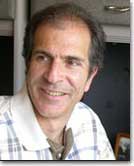 Rick Altman is the host of the PowerPoint Live User Conference and a long-time crusader of bringing a sanity check to the presentation community. Through multiple books, training videos, dozens of online articles, and now a blog and webinar series, Rick offers advice, strategy, and technique for those seeking to master their presentation projects.
Rick Altman is the host of the PowerPoint Live User Conference and a long-time crusader of bringing a sanity check to the presentation community. Through multiple books, training videos, dozens of online articles, and now a blog and webinar series, Rick offers advice, strategy, and technique for those seeking to master their presentation projects.
PowerPoint Live is attended by over 200 annually and has become one of the must-attend events for those in the business of creating and delivering professional-grade presentations.
Who Should Purchase:
- Communications professionals who want to enhance their partnership and value to the business.
Have you ever watched your client on television and thought: “Oh, my! Look at how many chins he has, and what’s that terrible glare coming off his shirt and forehead? I never noticed in our meetings that he was that heavy. He also looks scared to death – and why does he keep licking his lips?” You tried to coach him on his message. In fact, you did all you could do to help him develop sound bites, and now you can hardly concentrate on the message with the way he looks, because he is doing so many distracting things.
This CD will teach you how to effectively coach your clients and colleagues for appearances on TV, both live and prerecorded. It will teach you when and how to offer praise and criticism without being offensive. And it covers how interviewees should dress, posture themselves and provide effective message delivery. Your purchase also includes a slew of extras – at no extra cost!
Learning Topics:
- The tricks of the trade to help people appear calm and confident on camera, even if they are not
- How to look natural — from make-up to body language and movements
- Tips and techniques to help prevent some of the unexpected distractions that can prohibit your true message from getting out to your audience
- How to motivate your clients and colleagues to improve their media performances
- How to tactfully and effectively learn to stress the need for “rehearsal”
TJ answers real-world questions on:
- Suggestions to get your boss to undergo some training
- How to convince your CEO to talk to the press
- Techniques to overcome annoying speech tics
- How to keep your answers concise and to the point
- How to provide constructive feedback in a jiffy
- How not to come off as though you’re dodging a question—even if you are
- What your executive should bring into a television or radio interview
- How to prepare an executive for the hard questions
Instructor:
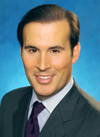 TJ Walker, president of Media Training Worldwide, is one of the world’s leading authorities on media and presentation training. With more than 20 years of media training experience, TJ has trained thousands of CEOs, authors and experts, including Nobel Peace Prize winners, leading government officials in the United States, European prime ministers and African diplomats. He is producer and host of daily audio and video Speakcast broadcasts, covering media and presentation training tips and techniques. A leading corporate trainer, he has personally trained top executives at Unilever, Bank of America, Hess, Allstate Insurance, Charles Schwab, Akzo Nobel, US Trust, Dun and Bradstreet, The Hartford and EMC. He is also the official media trainer of the Miss Universe Organization.
TJ Walker, president of Media Training Worldwide, is one of the world’s leading authorities on media and presentation training. With more than 20 years of media training experience, TJ has trained thousands of CEOs, authors and experts, including Nobel Peace Prize winners, leading government officials in the United States, European prime ministers and African diplomats. He is producer and host of daily audio and video Speakcast broadcasts, covering media and presentation training tips and techniques. A leading corporate trainer, he has personally trained top executives at Unilever, Bank of America, Hess, Allstate Insurance, Charles Schwab, Akzo Nobel, US Trust, Dun and Bradstreet, The Hartford and EMC. He is also the official media trainer of the Miss Universe Organization.
TJ is the world’s most widely published and produced media trainer, with more than 50 books, training videos, CDs and software programs to his credit. He has also been a media columnist for Investor Relations Magazine. Additionally, Walker is known internationally for his many years as a political commentator for the Voice of America Radio Network. More than 65,000 readers subscribe to his weekly Media Training Tips Newsletter, including most of the Fortune 500 corporations. He is a frequent news commentator and has appeared often on MSNBC, Fox News Channel, Court TV and Bloomberg TV. He also has been a syndicated TV and talk show host, appearing on or hosting more than 2000 TV and radio shows. He has also hosted talk radio shows on seven different networks and has been featured in the New York Times, NBC News, ABC News, CBS radio and most major radio news outlets.
Walker was a merit scholar at Duke University, where he graduated magna cum laude. He has lectured or conducted trainings at Yale University, Columbia University and Princeton University. He is also co-leader of the Communitelligence Media Training community and posts a daily video clip on the site.
Who should Purchase:
This practical, information-packed learning opportunity is ideal for public relations professionals, as well as professionals in:
- Corporate Communications
- Internal Communications
- Public Affairs
- Public Relations
- Marketing
- Webcast Marketing
- Anyone who is associated with television broadcasts
- College/university libraries and bookstores
Twitter, Facebook, blogs, wikis. A lot has changed on the web in recent years. So isn’t it time you revisited your organizations’ web site content strategy? An obsolete strategy can confound your audience and keep them away in droves. A successful content strategy, however, can be the spark that ignites your web site and helps you plan for and create compelling web content that rings true with your brand, aligns with your marketing plan, and keeps your target audience coming back for more. No small trick in a 140-character world.
What You Will Learn:
- Reasons why you need a web site content strategy
- Benefits of having a web content strategy that integrates with your marketing plan
- Key questions to ask to develop a successful web content strategy
- How to write web copy that is customer-centric, not sender-centric
- Top ten tips for writing concise and easy-to-scan web copy
- Tips for organizing content on a web page
Other Questions:
- What is a web content strategy and why do you need one?
- What process should you use to develop a web content strategy?
- How can you get customers and prospects to read your web copy?
- How can you determine if web content is good or bad?
- If your web content sucks, what’s the best way to fix it?
- How should you organize content on a web page?
Presented by:
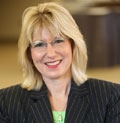 Barbara K. Mednick is an experienced and award-winning marketing communications and PR strategist, copywriter and trainer with more than 25 years of broad communications expertise. As president of BKM Consulting, Inc. in Minneapolis-St. Paul, Minn., she provides strategic marketing communications/PR consulting and planning, copywriting and training to a variety of clients including businesses, universities and nonprofit organizations. Prior to launching BKM Consulting in 1999, she held senior account management positions at several top Twin Cities PR and advertising agencies. During her career, she has garnered a number of industry awards for successful PR and marketing campaigns conducted for clients. She is a member of Minnesota Interactive Marketing Association (MIMA) and an active member of the Minnesota Chapter of the International Association of Business Communicators (IABC) – serving on the board of directors three times. She also serves on the board of directors for Minnesota Computers for Schools and the Ramsey County Workforce Investment Board. Barbara publishes a monthly e-newsletter for clients and colleagues along with a blog (www.bkminsights.blogspot.com), which focus on the intersection of marketing communications, public relations and social media marketing. Read Barbara’s complete bio.
Barbara K. Mednick is an experienced and award-winning marketing communications and PR strategist, copywriter and trainer with more than 25 years of broad communications expertise. As president of BKM Consulting, Inc. in Minneapolis-St. Paul, Minn., she provides strategic marketing communications/PR consulting and planning, copywriting and training to a variety of clients including businesses, universities and nonprofit organizations. Prior to launching BKM Consulting in 1999, she held senior account management positions at several top Twin Cities PR and advertising agencies. During her career, she has garnered a number of industry awards for successful PR and marketing campaigns conducted for clients. She is a member of Minnesota Interactive Marketing Association (MIMA) and an active member of the Minnesota Chapter of the International Association of Business Communicators (IABC) – serving on the board of directors three times. She also serves on the board of directors for Minnesota Computers for Schools and the Ramsey County Workforce Investment Board. Barbara publishes a monthly e-newsletter for clients and colleagues along with a blog (www.bkminsights.blogspot.com), which focus on the intersection of marketing communications, public relations and social media marketing. Read Barbara’s complete bio.
 Lisa Graham-Peterson, MA, ABC, is marketing communications director at CHS Inc., a Fortune 100 company and the largest farmer-owned agricultural cooperative in the U.S. Lisa integrates offline and online strategic programs to support the CHS brand and mission as a diverse grains, energy and foods company. Lisa is an accredited business communicator and active with a number of professional and community organizations. She has been a guest lecturer on integrated communications topics at the Carlson School of Management at the University of Minnesota, as well as St. Catherine University and Metropolitan State University, both in the St. Paul/Minneapolis area.
Lisa Graham-Peterson, MA, ABC, is marketing communications director at CHS Inc., a Fortune 100 company and the largest farmer-owned agricultural cooperative in the U.S. Lisa integrates offline and online strategic programs to support the CHS brand and mission as a diverse grains, energy and foods company. Lisa is an accredited business communicator and active with a number of professional and community organizations. She has been a guest lecturer on integrated communications topics at the Carlson School of Management at the University of Minnesota, as well as St. Catherine University and Metropolitan State University, both in the St. Paul/Minneapolis area.
Learn the laws and myths that can help keep you out of copyright hot water
As the topic of copyright use and abuse grows in importance in both commerce and everyday life, so do the assumptions about how the law works. This session focuses on 10 of the most significant misunderstandings and misperceptions about the role of copyright in commerce and culture. It reveals the philosophical and economic foundations of American copyright and considers ways that globalization is changing the system.
Learning topics:
- What may be protected by copyright and what may not
- What rights copyright holders have and how they can enforce them
- The limitations of copyright and why it’s important to know what they are
- How digital technology and networking are complicating the copyright system
- How the globalization of culture and commerce is complicating the copyright system
Siva answers real-world questions on:
- The ability of reusing one’s original material after one has left a company
- Using other’s words and images, externally and internally
- How to indicate copyright in text
- Grabbing other’s graphics off the Internet and using them in one’s own presentations
- Using client logos in one’s marketing brochures and Web sites without their permission
- Copying-and-pasting text from other Web sites to use on one’s own site
- The best way to protect one’s writings and photographs published on the Web
Instructor:
 Siva Vaidhyanathan, a cultural historian and media scholar, is the author of:
Siva Vaidhyanathan, a cultural historian and media scholar, is the author of:
- Copyrights and Copywrongs: The Rise of Intellectual Property and How it Threatens Creativity (New York University Press, 2001)
- The Anarchist in the Library: How the Clash between Freedom and Control is Hacking the Real World and Crashing the System (Basic Books, 2004).
Siva has written for many periodicals, including American Scholar, The Chronicle of Higher Education, The New York Times Magazine, MSNBC.COM, Salon.com, openDemocracy.net, and The Nation. After five years as a professional journalist, he earned a Ph.D. in American Studies from the University of Texas at Austin. He has taught at Wesleyan University and the University of Wisconsin at Madison and is currently an assistant professor of Culture and Communication at New York University. He lives in New York City.
In this information-packed webinar you will learn how to turn your trusty old laptop or desktop into your very own personal writing assistant. Listen to Daphne, a writing coach and former corporate communicator and journalist offer dozens of neat tips to make your computer and software work wonders for your writing effectiveness and speed.
What You Will Learn:
- The powerful tools hidden within MS Word you can harness to make yourself a better writer.
- The exact number of words you should write per sentence for maximum reader appeal.
- Three poweful and unusual ways to use the “search” function for better writing.
- The common misunderstanding about correct paragraph length (hint: your high school and college teachers had it all wrong!)
- The names of powerful pieces of software that you should rush out and buy immediately (it costs less than $40!)
- Two tips for better incorporating research and interview notes into your writing
- How you can become your own best editor.
Presented by:
 Daphne Gray-Grant started her writing life as a journalist at her family’s weekly newspaper in Vancouver, B.C. – and then quickly advanced to become features editor at a busy metropolitan daily. From there she moved into corporate communications, producing newsletters, brochures and annual reports for a wide range of clients. Despite her many years of experience she never really enjoyed writing — until she set about developing the tools and techniques to do it better. To share this knowledge, in 2005 she launched an online coaching business, http://www.publicationcoach.com , working with individuals and companies seeking to improve their writing skills. Through her site, she offers a popular and free weekly newsletter called Power Writing.
Daphne Gray-Grant started her writing life as a journalist at her family’s weekly newspaper in Vancouver, B.C. – and then quickly advanced to become features editor at a busy metropolitan daily. From there she moved into corporate communications, producing newsletters, brochures and annual reports for a wide range of clients. Despite her many years of experience she never really enjoyed writing — until she set about developing the tools and techniques to do it better. To share this knowledge, in 2005 she launched an online coaching business, http://www.publicationcoach.com , working with individuals and companies seeking to improve their writing skills. Through her site, she offers a popular and free weekly newsletter called Power Writing.
Who should purchase:
- Writers
- Editors
- Designers
- Publishers, print and electronic
Universal search changes everything! The advent of Google’s Universal Search has been called “the most radical change to its search results ever.” So, how do you take advantage of Google’s new approach that blends listings from news, blog, video, and image search among those it gathers from web search? In other words, how do you get found in all the right places? Purchase this CD and learn strategies and tactics for expanding the audience for their content through Google News, Yahoo! News, Google Blog Search, Technorati, Google Image Search, Flickr, YouTube, Yahoo Video and a growing variety of other sites.
Learning Topics:
- How to optimize, distribute and measure press releases, RSS feeds, images and video files
- Pick your target keywords for news, blog, image, video and web search engines;
- Position your keywords in crucial locations;
- Create original and unique content of genuine value, including text, images and video;
- Avoid search engine stumbling blocks;
- Build inbound links intended to help people find interesting, related content;
- Just say no to search engine spamming;
- Submit your Sitemap, RSS feeds, and videos to search engines and directories;
- Verify and maintain your listings; and
- Go beyond web search engines to include key vertical search engines.
Presented by:
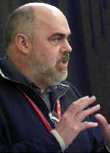 Greg Jarboe is the president and co-founder of SEO-PR, a search engine optimization firm and public relations agency with offices in San Francisco and Boston. He is also a partner in Newsforce, developer of an integrated suite of press release SEO tools.
Greg Jarboe is the president and co-founder of SEO-PR, a search engine optimization firm and public relations agency with offices in San Francisco and Boston. He is also a partner in Newsforce, developer of an integrated suite of press release SEO tools.
Greg is a frequent speaker at Search Engine Strategies, WebmasterWorld’s PubCon, and public relations conferences. He is also the news search, blog search and PR correspondent for the Search Engine Watch Blog.
Greg has more than 25 years of experience in public relations, marketing, and search engine optimization at Lotus Development Corp., Ziff-Davis, and other companies. He graduated from the University of Michigan, attended the University of Edinburgh, and worked on his Masters at Lesley College.
Learn the seven keys to communication credibility and to a more professional you.
Whether you like it or not, how you present yourself in person or in print does more than leave an impression. For yourself and those you represent, it establishes your basic credibility. That quick note, that dashed-off e-mail or that hurried newsletter may be all your colleagues or clients know about your competence — or how much you care. Learn seven keys to credibility and to a more professional you.
In this seminar you will learn the importance of being:
- Correct (get it right – grammar, spelling)
- Consistent (follow a stylebook)
- Clear (use simple words, short sentences, short paragraphs)
- Concise (save people time)
- Coherent (think structure, organization)
- Complete (answer the questions)
- Creative (be interesting, don’t bore)
Who should purchase this webinar:
- Writers
- Editors
- Designers
- Publishers, print and electronic
It’s also an important addition to the offerings of college/university libraries and bookstores.
Instructor:
 , Ph.D., is professor emeritus of the Missouri School of Journalism, where he taught for 32 years. He has an M.A. in journalism, an M.A. in speech from Marquette University, a certificate in film, radio and television from New York University and a doctorate in journalism from the University of Missouri.
, Ph.D., is professor emeritus of the Missouri School of Journalism, where he taught for 32 years. He has an M.A. in journalism, an M.A. in speech from Marquette University, a certificate in film, radio and television from New York University and a doctorate in journalism from the University of Missouri.
Don has conducted more than 950 seminars for organizations, corporations, associations and publications. He is co-author of News Reporting and Writing (8th ed.), Telling the Story: The Convergence of Print, Broadcast and Online Media (2nd ed.) and Beyond the Inverted Pyramid and author of Publication Editing.
In 1995, he received a University of Missouri-Columbia Faculty-Alumni Award and was named the O.O. McIntyre Distinguished Professor of Journalism for 1995-1996. In 1998, he won a University of Missouri Gold Chalk award for outstanding service in the training and mentoring of professional students. In 2002, he was elected a Fellow of the International Association of Business Communicators. In 2003, he became a William T. Kemper Fellow for Excellence in Teaching and, in 2005, won a Lifetime Achievement Award from the American Society of Business Publications Editors.
He currently serves as executive director of the Missouri Association of Publications, which he founded in 2004.





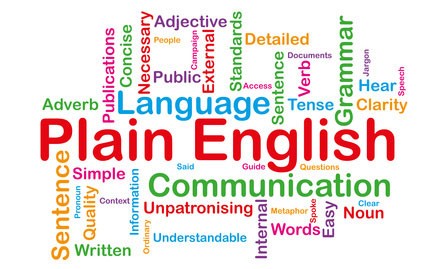
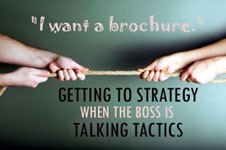
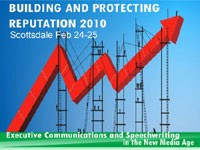
 David Murray
David Murray


